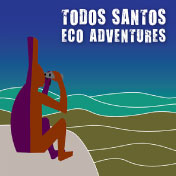by Bryan Jáuregui | Adventure, Culture, Travel Industry
Mario’s guide to surfing the cape is part of our article, Surfing Santeños, published in the Summer 2012 issue of Janice Kinne’s Journal del Pacifico.
Las Palmas (San Pedrito)
Drive 5 km south from Todos Santos on Highway 19. Look for the Campo Experimental building on your left, and turn off the highway onto one of the dirt roads that winds toward the beach. Las Palmas is a beautiful beach with a lot of palm trees, and has a fast, heavy beach break.
• Best for: Intermediate to advanced surfers
San Pedrito
South of Las Palmas you will find San Pedrito. Also known as Pescadero Beach, it’s about 8 km south of Todos Santos. It’s a point break with a rocky bottom and breaks best with a north swell. • Best for: Advanced surfers
Los Cerritos
This is one of the best beaches in Mexico for learning to surf. Los Cerritos is a beach break with a sandy bottom and has one of the most consistent waves in Baja. It is also one of the few swimmable beaches in the area. From Todos Santos, look for the Cerritos signs at km 66. Lodging and restaurants are located nearby.
• Best for: Beginner to advanced surfers
La Curva
La Curva, also known as KM 93, has a long, right point break that only breaks with north swells and mostly in the winter. Watch for three large rocks you can only see at low tide.
• Best for: Intermediate to advanced surfers
Monuments
Five minutes from Cabo San Lucas on the way to San Jose del Cabo, this is a left point break that is best with a south swell, although it also breaks with north swells. Take the road to Misiones Hotel and park on the road. Be aware of sea urchins at low tides.
• Best for: Advanced surfers
Old Man’s
Also known as Acapulquito, this is one of three close breaks on the Costa Azul Beach. It is east of the Palmilla sign, on the right below the view point off the highway to San Jose del Cabo. It breaks with a south swell and there is a long, right point break, especially good for long boards. The waves are mushy and easy to read. Watch for rocks at low tide. Surf lessons and rentals are available here, and many restaurants are located nearby.
• Best for: Beginner to intermediate surfers
The Rock
Another break that needs a south swell, The Rock is located on the Costa Azul Beach, east of Old Man’s. It is named for the rocks that are visible from the viewpoint. It is a long, right point break, a little faster than Old Man’s.
• Best for: Intermediate to advanced surfers
Zippers
Last of the three Costa Azul breaks, Zippers is a shorter, faster, right point break. This break is popular with the locals who may seem a little territorial. Only breaks with a south swell.
• Best for: Advanced surfers
Shipwrecks
Shipwrecks offers a fast, right point break. Be aware of rocks. It is located on the East Cape. To get there travel past downtown San Jose del Cabo on the bridge over the estuary then drive approximately 20 minutes east.
• Best for: Advanced surfers
Nine Palms
Drive another 20 minutes east of Shipwrecks, and look for the palms at the little rancho, where you may find donkeys and cows resting in the shade. This is a mushy, long point break, good for long boards.
• Best for: Beginner surfers
by Bryan Jáuregui | Adventure, Culture, Travel Industry
This article by Bryan Jáuregui of Todos Santos Eco Adventures and Mario Becerril of Mario Surf School was published in the Summer 2012 issue of Janice Kinne’s Journal del Pacifico.
In the age of jet-setting surfers pursuing monster waves across the globe for fame and money; of California surf breaks so crowded it is not uncommon to see 100 boards or more in the water; of jet skis towing surfers to catch waves that the human body could never conquer on its own, it is wonderful to hear Todos Santos resident Steve Merrill recall the age in which he first saw a surfer. “It was 1956 and I was six years old. My parents were driving the car along Pleasure Point in Santa Cruz, California, and I saw a guy standing on a giant wooden board gliding across the waves, completely alone on the water. It is impossible to describe the impact that vision had on me. I knew then and there that surfing was what I had to do.” Steve’s immediate enthrallment with surfing is echoed in the voice of the young narrator in Australian writer Tim Winton’s surfer-coming-of-age novel Breath, “How strange it was to see men do something beautiful. Something pointless and elegant, as though nobody saw or cared…as if dancing on water was the best and bravest thing a man could do.” Back in the day, Winton tells us, surfing was the closest a man could get to poetry.
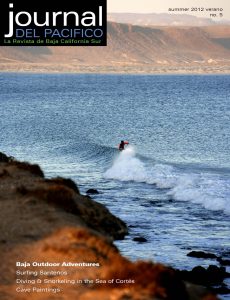
If surfing is akin to poetry then Todos Santos today is the City Lights Bookstore and the Beatniks are having a poetry slam. “We’re living the bonus years here in Todos Santos” says surfing resident Billy Girvan. Like many expats in the Todos Santos surfing community, Billy grew up in California just as surfing culture was taking root. “In 1959 I was 12 years old and saw these guys surfing in Santa Barbara. All I wanted was to be like them. It wasn’t just the surfing, it was the life style that was so appealing, the beach life, the freedom. They were so different from everyone else. I traded my go-cart for a surfboard and never looked back.” Todos Santos surfer Jim McRoberts knows just how he feels. “In 1962 I was 15 and living in Sierra Madre, California. My uncle was a founding member of the San Onofre Surf Club and took me with him to the beach one day. That first time riding a wave, the sensation was simply amazing. It took hold of me immediately and I couldn’t think of doing anything else. My passion has never lessened from that day to this.” Like Billy, Jim was just as in love with the surfing culture as with the surfing itself. “Everything important was happening at the beach.”
Billy, Jim, Steve and countless other expat surfers living in Todos Santos went from being “grommets”, or “gremmies” – slang for young surfers – to embracing the full surfing life as older teens and adults. A lot of school was missed, a lot of pretty girls chased, a lot non-food items ingested and a whole lot of waves caught. Poetry? Absolutely. “Poetry is not only dream and vision” says poet Audre Lorde, “It is the skeleton architecture of our lives. It [is] a bridge across our fears of what has never been before.” For these boys surfing was the bridge to embracing nature in a most intimate, thrilling and terrifying way. Surfing was the bridge out of an ordinary life into something sublime. Surfing was the bridge to salvation. “Going to the ocean is like going to church for me.” says Jim who went on to get a Masters in English and is currently writing a novel about surfing. “If it wasn’t for surfing I would have been a drug addict or alcoholic like a lot of my friends. You have to stay physically fit to surf. It saved me.” Billy, who went on to become a founding member and bass player for the hard rock band NoXit, agrees. “I was in the midst of living this rock star’s life and surfing is definitely what kept me healthy, what kept me alive.”
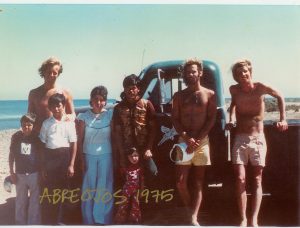
Steve Meisinger and Friends in Baja in 1975
As countless movies and songs throughout the 1960’s and ‘70s glamorized surfing culture, the surf breaks in California inevitably became more crowded and surfers became more territorial and protective of their breaks, often resulting in a tense and aggressive atmosphere. Some surfers, like Steve Meisenger, or “Meisy”, started looking elsewhere and in 1973 at the age of 18 the Morro Bay, California board shaper started coming to Baja to enjoy the peninsula’s stark beauty and uncrowded breaks. “I was getting a degree in Ornamental Horticulture at Cal Poly and would save all the money I made shaping boards during the year to come to Baja in the summer. We would live in the van and camp on the beach. We never went out to eat, we never stayed in a hotel. All of our money went to surfing and survival.” Meisy started a successful, 30-year career as a housing contractor but continued to come to Baja at least once a year. He stumbled upon Todos Santos in 1981 while looking for a mechanic. He was captivated. He found himself returning to surf the breaks here every year, and by 1990 had bought property and started building his house. “The environment in most of Baja is so harsh, but in Todos Santos we get the great waves as well as this lush environment, great weather and wonderful creature comforts.”
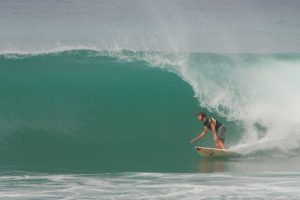
Steve Merrill Surfing in Todos Santos. Photo by Sam Belling.
The magic of Todos Santos surfing has a powerful pull. By the time Billy first visited Todos Santos in 1994 it had been 14 years since he’d last been on a surf board. But much to his joy he found that he could still ride the waves. Much to the consternation of his wife he also found that he really wanted to surf all the time, once again. “But luckily that beautiful woman really loves me so when I said I wanted to move to Todos Santos to surf she backed me 100%. We sold all of our property and here we are.” Jim knows just what he means. When he and his wife married in 1989 they moved to the mountains of Oregon so they could pursue her love of horses. “But I thought about surfing every single day, and even carved a sculpture of a wave to put over the mantel.” A 3-year road trip throughout the North American continent brought them to Todos Santos in 2009. It had been 20 years since Jim was last on a surf board, but the magic returned immediately. “Every good wave that you ride is like a gift. It is this energy that is there for you personally, energy that has come 2,000 miles for you to merge with and take to the Todos Santos shore.” Jim and his wife sold their Oregon property and have been in Todos Santos ever since.
No matter whether they surfed every day for the past 5 decades or abandoned the waves for years, surfing still provides the “skeleton architecture” of these men’s lives as they move through their 60s. And one of the key reasons they love surfing Todos Santos is, as Steve says, “This is as nice a surfing community as anyone could ever hope to find. There is hardly any localism and everyone on the waves is respectful and supportive of each other in the water.” While they may not have the stamina and moves of youth, the men don’t seem to mind (much). “Let’s face it” says Billy, “the best surfer out there is the one having the most fun. And that’s usually me!” Coming from a guy with 2 titanium bars, 4 screws and 3 vertical spacers holding his back together, that’s no mean feat. Billy already has days on the water when his back prevents him from getting up on the board, and he can see a time coming when he won’t be physically able to surf any more. “But I’m just not that worried” says Billy. “There is always mind surfing!” Poetry? Oh yes indeed.
by Bryan Jáuregui | Adventure, Travel Industry, Wildlife
This article by Todos Santos Eco Adventures was published in the Spring 2012 issue of Janice Kinne’s Journal del Pacifico.
If you sift back through the catalog of parental admonitions that were meant to ensure you a long and happy life – you know, “don’t stick your tongue on frozen metal”, “don’t eat yellow snow”, “don’t drink your father’s last bottle of beer” – somewhere buried in there your mother must surely have added “and oh yes dear, don’t swim with sharks”.
Very sound advice to be sure but swimming with sharks – whale sharks that is – in the Sea of Cortez is truly one of life’s great (and, sadly for you danger junkies, very safe) adventures. While whale sharks have thousands of teeth in hundreds of rows in their enormous mouths (imagine armed shark mouths 4 to 5 feet wide), they can neither bite nor chew. That’s right, they are happy to forego all human body parts in favor of plankton, krill and small fish. Go figure!
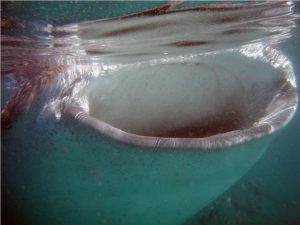
Whale Shark Mouth! Photo by Deni Ramirez
So now you feel safe but even if you were on the varsity swim team you’re probably wondering how you could actually keep pace with a shark in the water. Well, the whale shark got its moniker because it is the only fish that is literally as big as a whale; mature adults can reach 60 feet in length and 50 tons in weight. Reaching these proportions requires an immense amount of energy, which the whale shark gets by consuming huge volumes of plankton-rich water, then straining it out through its gills. In fact, to get the food it needs it is not unusual for a whale shark to filter 400,000 gallons of water an hour. To conserve this hard-won strength – and continue eating – whale sharks tend to do a lot of hanging about in the water, or, if moving, doing so at a very slow pace. This lollygagging is what makes it possible for non-bait types like humans to jump in and swim alongside them for a bit. Of course, when they want to put on the speed they certainly can so when a whale shark tires of your company all you will see is a swishing tail receding into the distance.
Now you’d think it’d be a relatively simple matter to learn about a mammoth fish the size of a school bus dawdling through the water eating up everything in its path. But the fact is that scientists still know relatively little about the whale shark, and La Paz resident Dení Ramirez of Whale Shark Mexico is trying to change all that. Originally from Mexico City, Dení has been studying whale sharks in La Paz since 2001, and completed her Ph.D. in marine biology last year. The whale shark’s skin is covered in a pattern of pale yellow spots and stripes that is unique to each animal, a type of fingerprint if you will, so Dení has been able to track some of the inhabitants of La Paz Bay. In fact, she has been tracking the young sharks Flavio, Tikki Tikki and Tango for almost a decade now, and has determined that they are true Baja residents. While whale sharks have been spotted across the globe from Australia to Djibouti, from the Philippines to Mozambique, Dení’s juveniles appear to travel only in the Sea of Cortez, from the Bay of La Paz to Bahia de Los Angeles – roughly 600 miles. We asked Dení why we seem to be seeing the whale sharks around La Paz so much more over the last couple of years than we ever did before.

Whale Shark Feeding in the Sea of Cortez: Photo by Deni Ramirez
“It’s really just a question of food. Over the last two to three years the conditions in the Bay of La Paz have been just right to produce an enormous amount of plankton for the whale sharks to feed on. The wind, currents, mangrove conditions – all these have combined to create an excellent environment for plankton growth that we just didn’t have for such extended periods in earlier years. Also, in the Bay of La Paz the plankton is rich in the coastal waters, and these relatively shallow waters give the young sharks in my group a certain amount of protection.” Dení is happy to take visitors with her on her research trips and share some of her extensive knowledge of whale sharks and research methodology.
Dení is currently doing a lot of work with the pregnant females who inhabit the deeper waters around Espiritu Santo Island and have found that they have much larger migrations than the young sharks due to their different needs as mothers, mothers who surely will work to ensure the long life and happiness of their offspring by admonishing “and dear, don’t try to eat the humans. They’ll just clog up your gills.”
TOSEA guest Mary Winzig recounts her whale shark adventure:
“Swimming with whales sharks is the most amazing thing I have ever done in my life. They are such magnificent animals and I felt so lucky to be in their presence. I was scared—to see something so large and to know you are jumping in the water with them made me pause for a moment. My heart seemed to be almost leaping through my wetsuit – I asked the guide to make sure they were whale sharks because their dorsal fins were so huge! But after watching them and seeing their polka dots, I realized I had to swim with them. You can’t be afraid of anything with polka dots! Jumping in and seeing them through the snorkel was magical. Once I was in the water, I wasn’t afraid. I have no idea how long I was in the water with them, 2 minutes? 15 minutes? I was transfixed. Their mouths look like the grill of a ‘57 Chevy. I have never felt so small or insignificant, but also so powerful. I have decided I have to do everything in my power to help save these magnificent creatures. Thank you Todos Santos Eco Adventures for this wonderful opportunity. I look forward to swimming with the sharks again!”
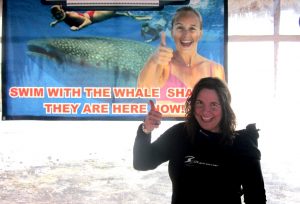
Mary Winzig After Swimming with Whale Sharks
© Copyright Sergio and Bryan Jauregui, Casa Payaso S de RL de CV, 2012
by Bryan Jáuregui | Culture, Travel Industry
“My mother was a free spirit, an egalitarian and a bohemian, and ended up getting sent away to school because she was always running off to work with Diego Rivera on his murals. And all this was when she was just 10 years old. You know, she never really cared for Frieda Kahlo very much.” So begins Alejandra Brilanti’s story of her mother Ana Nuñez Basso de Brilanti, the matriarch of the Brilanti family of Todos Santos and renowned silver artisan of Taxco.
While the likes of Eleonor Roosevelt ultimately became fans and customers of Ana’s, and her story is featured prominently in the histories of the silver jewelry industry in Taxco, it can be definitively declared that her artistic success was not her mother’s fault. When Ana was a little girl one of her sisters died and was laid out in the family parlor for 3 days. Ana thought the scene was beautiful and painted it. Her mother thought the painting was blasphemous and smashed it. These constant struggles over art earned Ana a passage to boarding school where, at the age of 14, she graduated to a teaching position to contribute to the family income. She worked incredibly hard for the rest of her life, but – despite her mother’s best efforts – she worked doing what she loved most: art.

Ana Brilanti
Ana and her husband Rafael moved to Taxco from Mexico City in the 1930s for Rafael’s government job. Around the same time, an American named William Spratling left his job as an instructor in architecture at Tulane University in New Orleans (where he shared a house with William Faulkner) and moved to Mexico full-time. He became an integral part of the Mexican art scene, and used the proceeds of a commission earned securing a New York exhibit for Diego Rivera to purchase a house in Taxco. At this time, the early 1930s, Taxco was famous for the production and export of silver, but there was no silver jewelry industry in the town to speak of. That all changed under Spratling. He opened his first store in Taxco in 1931, and by 1933 silver jewelry and silver objects designed by Spratling had become the major sellers in his shop.
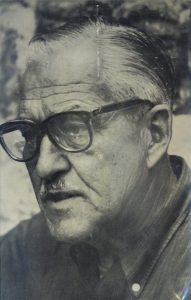
William Spratling
Spratling needed talented artists and artisans to create the jewelry for his store, and he was continually on the lookout for new apprentices for his workshop. One day as he was walking down the street, he saw Ana Brilanti in front of her house, and couldn’t help but notice the beautiful designs carved into her door. He inquired and Ana admitted that she was indeed the wood carver and designer, and Spratling persuaded her to share more of her designs with him. Amazed by what he saw, Spratling invited Ana to learn to work silver with him and the Brilanti silver dynasty was launched.
By 1940 Ana – like many other Spratling apprentices around that time – felt accomplished enough to go off on her own and, with Spratling’s blessing, opened her first silver store in Taxco, Plateria Victoria S.A. Ana’s husband had created a new technique for making jewelry of both copper and silver, and this combination became one of the distinctive hallmarks of Ana’s line of Victoria jewelry. American department stores accustomed to buying jewelry for their customers in Europe had their supply lines disrupted by World War II, so they started purchasing silver jewelry and objects from Taxco. Ana’s store did so well that her husband left his government job to become Ana’s manager and promoter, and their success lead to the opening of a 2nd store in Taxco in 1958 called Cony.
Alejandra was 12 when her father passed away, and it was only then that she really got to know her mother. And despite all of Ana’s success, the woman that Alejandra discovered was still that 10-year old egalitarian at heart. She never spent any money on herself (“why would a person need more than one pair of shoes?”) but continually gave her money to those in need. Not only did she run a small local hospital, she also made all the clothing and sheets that it needed. Alejandra continued to live near her mother after she married Ruben Gutierrez, and the couple only left Taxco and Ana when the tough economy in Taxco drove them to seek opportunity in Mexico’s last frontier, Baja California Sur.
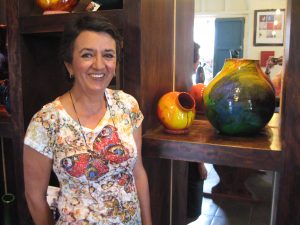
Alejandra Brilanti with Ruben’s Pottery in Manos Mexicanos
Cabo was Alejandra and Ruben’s first home in Baja, but a few weekends in Todos Santos soon convinced them to move north, and for the last 16 years they’ve made their home, built their business, and raised their family in Todos Santos. Their beautiful store of pottery, handicrafts and jewelry – Manos Mexicanos – has been in at the corner of Centenario and Topete since its inception.
And the magic of our pueblo magico has nurtured the artistic leanings of the family. Shortly after moving to Todos Santos Ruben took a pottery class with a Navajo Indian who had been invited to town by founding artist Charles Stewart and his wife Mary Lou. While Ruben had always been good with clay, that instruction and inspiration set him on a path to creating some the most beautiful and distinctive pottery to be found in Baja. Alejandra and Ruben’s nephew Arturo also found his artistic calling in Todos Santos: he works at Manos Mexicanos by day, and paints every night after putting his children to bed. His works can be found in both his mother’s store Galeria A and Manos Mexicanos. And of course there are the Brilanti silver stores. After Ana Brilanti’s death, Alejandra’s brother Pepe joined her and Ruben in Todos Santos. He opened Joyeria Brilanti, a store that pays wonderful homage to Ana’s beautiful designs. Pepe’s son Rafael also runs a Brilanti Joyeria in Todos Santos, producing silver works based on both his Grandmother Ana’s designs and his own.
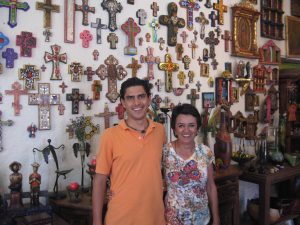
Alejandra and Arturo in Manos Mexicanos
Given the fierce battles that she fought to pursue her own artistic career, Ana Brilanti would no doubt be thrilled to see her skills, designs, and innate artistic talent blossoming and thriving with her descendents in an artist colony. Her only note of disapproval might be for the Frieda Kahlo Christmas ornaments on sale in her daughter’s store!
© Copyright Sergio and Bryan Jauregui, Casa Payaso S de RL de CV, 2012
by Bryan Jáuregui | Culture, Travel Industry
by Todos Santos Eco Adventures
It was 1968 and Robert Hall was living The American Dream. He had a thriving psychiatric practice, a huge house in Mill Valley, and a wonderful family with his childhood sweetheart of a wife and their children. The only drawback was that it was killing him. He was working 24/7 – a Rolfing practice during the day and a Gestalt therapy practice at night – and he was exhausted, drained and he needed some answers. As has happened at every critical juncture in his life, he got them – immediately. He went to a friend’s house and, while waiting for him, saw a piece of paper on the floor. He picked it up and found it was a transcript of a talk by an Indian spiritual master. As he began to read he found it was like a voice speaking in his mind, a light literally shining in the darkness. It was a light so bright that his wife actually saw it too. He dialed the telephone number at the bottom of the page, and it was his next-door neighbor in the geodesic dome. The signs were clear and Robert didn’t hesitate.
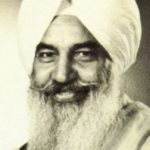
Charan Singh, Robert’s Spiritual Master
Robert and his wife Alyssa left their 3 children with a friend and went to India for 4 months to study with Charan Singh, the man whose talk Robert had read on that fateful day, and the man who was to remain Robert’s spiritual master for the rest of Singh’s natural life…and beyond. As Singh’s guests their 4 months in India were completely free, but not without some costs. Alyssa contracted typhus and Robert was frantic as there were no doctors in the area they were living except one who didn’t like to work on Westerners, despite– or perhaps because of – the fact that he was an Austrian-born American himself: Dr. Randolph Stone. He also happened to be Charan Singh’s personal physician, who was finally able to persuade him to see Alyssa. When Robert and Alyssa arrived at his garden office, they saw lots of Indians sitting around in various stages of distress, many with metal clamps on their fingers. There was screaming coming from Dr. Stone’s office. Robert, an army veteran, pressed on. When Dr. Stone worked on Alyssa with his hands he swayed and sang like the religious ecstatic he was. Robert tried not to freak out. When Dr. Stone finished working on Alyssa he had completely healed her. On the spot. Robert became his apprentice.
Robert’s career to that point had been shaped by his apprenticeships with two leading lights in the psychiatric world, both of whom were focused on mind-body integration in treating patients: Dr. Fritz Perls who developed Gestalt Therapy, and Dr. Ida Rolf, originator of the body-work known as Structural Integration or “Rolfing”. In fact, he ended up with that house in Mill Valley when Dr. Perls asked him to move to the Bay Area to start the Gestalt Institute of San Francisco. Robert’s apprenticeship with Dr. Stone took his approach to mind-body work to a whole new level. Dr. Stone, the founder of Polarity Therapy, taught Robert how to work and heal with the energy of the body.
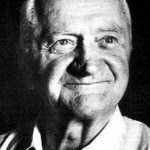
Randolph Stone, Robert’s Teacher, Partner and Friend
Inspired by his experiences in India, the teachings of Charan Singh, and his 3 main apprenticeships, Robert co-founded the Lomi School in Santa Rosa, California in 1970 “to bring together a group of far-out modalities into one practice. Lomi was founded on the principle of the integration of mind, body, and spirit, with particular emphasis on the life of the body.” Robert, his wife Alyssa, and two other couples formed the core of the school, and Dr. Stone became their partner and teacher. Robert earned an international reputation for his innovative and pioneering therapies and the Lomi School thrived. Robert no longer had to do Rolfing during the day and Gestalt at night – he had integrated it all into one unique, inclusive and embracing practice. Turns out The American Dream just needed some Indian spice.
But this wasn’t the path that Robert had set out on in life. When he was 15 and living in upstate New York, his passion was to go into surgery, and he managed to get himself apprenticed to the town surgeon. He paid for medical school at the University of Buffalo by working nights as a surgical nurse, then took a year of internship and beginning surgery residency in Salt Lake City. Surgery was his calling. But in Salt Lake City Robert was hit with the realization that surgery residencies didn’t pay enough to support his growing family, so he joined the army as a captain and enjoyed a pay grade that covered his family’s needs. The tricky part was that at that point the army didn’t want more surgeons, it wanted more psychiatrists. So Robert agreed to a psychiatric residency under the army’s auspices, with the result that his first job out of residency was as Chief of Neuropsychiatry at Fort Knox (where his job description covered something called Mental Hygiene). When contemplating his numerous accomplishments in a field chosen for him by the army, a field that he so obviously loves and thrives in Robert says, “I didn’t do any of it. I didn’t make any of it happen. There is no such thing as free will. You just have to say yes to life.”
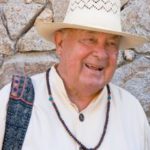
Robert in Mexico. Photo by Alvaro Colindres
In 1999 Robert decided that he was ready to retire, so he and his partner Alvaro began searching the world for the best place for them. (Robert and Alyssa had divorced, although they remain very close to this day and share 6 grandchildren.) They traveled to Italy and Spain and points beyond, but never found exactly what they were looking for. Then one of Robert’s apprentices called to tell him about a great artists’ colony he had heard about from a woman named Catherine Wall, a Todos Santos resident and artist. Robert and Alvaro came to Todos Santos to visit soon after, and within 10 minutes Robert fell in love with it. In fact, he remembered driving through Todos Santos on a vacation in 1987 and sensing “something very special in the air.” Alvaro, however, was less enthusiastic. Robert returned by himself a few months later and asked Janet Howey, the owner of El Tecolote Bookstore, if she knew of any places to rent. In short order Robert had signed a lease on La Ruina, a house in as good a state of repair as the name implies. He didn’t mention it to Alvaro until he returned home. Within 6 months Robert (eagerly) and Alvaro (reluctantly) had moved all their belongings to Todos Santos and made the town, and La Ruina, their home.
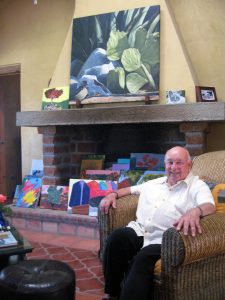
Robert at home in Todos Santos with his paintings and an Erick Ochoa original
Like many Americans, Robert had the bulk of his retirement encased in his home, a beautiful old Victorian in Tomales Bay, Marin County. With the final move to Todos Santos Robert put his house on the market and – as was common and expected at the time – it was quickly snapped up and placed in escrow. But at the last minute the buyers found some termite damage and abruptly withdrew from the deal. Robert and Alvaro found themselves shockingly, jarringly and absolutely flat broke. Literally no funds to survive on. They decided that prayer was in order, so they got down on their knees and prayed for guidance. While they were kneeling on the floor a knock came at the door. Alvaro got up to answer it and there stood an American woman whom neither of them had ever seen before. “She said ‘I heard that Robert was a follower of Charan Singh and thought he might like to have this.” She handed a book to Alvaro, who went inside to give it to Robert. When they both returned to thank her, she had left. The book was the memoirs of Robert’s spiritual master in India, Charan Singh, now long dead but clearly not gone. Two weeks later the Tomales Bay house sold, Robert and Alvaro bought their current home in Todos Santos, and Robert settled in to enjoy retirement. As added grace, Alyssa bought a house nearby, and Alvaro grew to love Todos Santos as much as Robert, becoming a real estate agent and a great photographic chronicler of the town and its surrounding natural beauty.
One of the many results of his first trip to India was that Robert became a serious practitioner of meditation, and a firm believer in its benefits for the mind and body. In 1974 he befriended several dharma teachers who practiced Vipassana, or Insight Meditation. He started going on 10, 11, 12-day silent retreats with them and saw that these types of retreats strongly dovetailed with Gestalt therapy, helping people to really focus on the here and now, on being in the immediate present. He also came to embrace Buddhism because he saw how practical it was and how it actually answered the question of the meaning of life. He became an ordained Buddhist priest and started leading his own silent retreats in 1980. He also became affiliated with Spirit Rock Meditation Center, and currently serves on the Center’s Teachers Council.
When he retired to Todos Santos Robert had no intention to teach again. He had taught thousands of people all over the world and served as a mentor to hundreds more. He loved teaching, but now just wanted to sit back, relax and enjoy the serenity of Todos Santos. “Then one day Alvaro told me he thought I should teach again. I was against it, but he finally persuaded me to at least give it a try. So we advertised a dharma talk at La A.R.C.A., and to my surprise over 30 people showed up. And Alvaro was right, the teaching really stimulated me and I realized then that I would like to continue.” Now residents and visitors alike find that one of the best things about being in Todos Santos is the opportunity to participate in Robert’s weekly Sunday morning dharma talks at L La A.R.C.A. They also have the opportunity to participate in the week-long silent meditation retreats that Robert offers several times a year in Todos Santos. Robert does not confine his activities in Mexico to Todos Santos alone. A fellow student of Fritz Perls contacted him a few years ago and persuaded him to hold workshops in various cities around Mexico, and he now conducts several of these every year. “I absolutely love teaching my Mexican students. Mexico is my home now and it’s wonderful being able to connect with young Mexicans in this way. This has been a great part of my so-called retirement.”
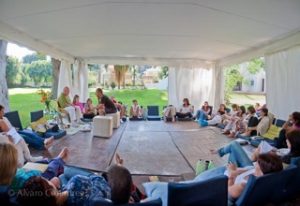
Robert Teaching in Puebla. Photo by Alvaro Colindres
On the Easter Sunday when Robert was 12, he took his young boy’s worries up the hill to seek some solace in nature. As he sat there, he was struck with the forceful inspiration, with what seemed like Word from on High, to be open to all of life’s experiences. Robert embraced that inspiration, and built an inspired and inspiring life around it. Luckily, Robert is willing to share some of the knowledge, some of the learning, some of the magic that flowed from that moment, and thereby inspire the rest of us in this pueblo magico. Thank you for prodding him on Alvaro!
© Copyright Sergio and Bryan Jauregui, Casa Payaso S de RL de CV, 2011
by Bryan Jáuregui | Adventure, Culture, Travel Industry
In 1996 Janice Kinne moved to Todos Santos with her most precious possession in the world, her baby daughter. And not much else. Mexicans call Baja the Last Frontier, and Janice was the embodiment of pioneering spirit. She had been working 60-70 hours a week as Director of Information Systems for a large ad agency in the Twin Cities area, and – while she liked the work – decided that there had to be a better lifestyle for her somewhere. Maybe somewhere with less snow and more sun, maybe somewhere with less people and more palms, maybe somewhere with less mania and more magic, maybe, in short, somewhere like Todos Santos.
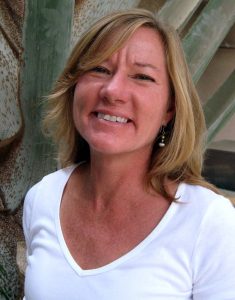
Yoga Instructor Janice Kinne
So she quit her job, sold her house, grabbed her daughter and came down to Todos Santos, where she moved into her house even though they were still constructing it around her, and bought a horse even though she hadn’t ridden much before. She looked around and found herself in a great community of artists who were giving gallery tours and organizing talks, and decided that a regular calendar of events was exactly what the community needed. Janice now lives in a beautiful house, is an expert horsewoman and her magazine – El Calendario de Todos Santos – is in its 13th year of production, has doubled in format size, and attracts advertisers from across Baja California Sur. Amazing what a little dreaming can do.
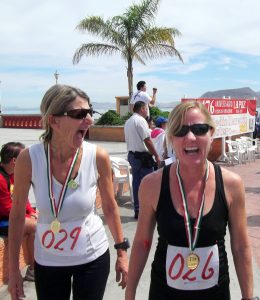
Janice (right) and Buddy Celia at La Paz Half Marathon
Back in her college days in Minnesota Janice worked as a health instructor and weight lifter in one of the local spas. Health spas being in short supply in Todos Santos, Janice turned to other channels for inspiration, namely the Yoga Zone TV channel. Each morning she would get her daughter up, then do her yoga class with the Yoga Zone. She got hooked. She sought out yoga masters and studios and practiced. She bought tapes and books and practiced. She trained for marathons and saw what yoga could do to help her. She hung out with surfers in Todos Santos and saw what yoga could do to help them. She took instructor classes and started teaching. She worked out a yoga program for equestrians and started offering it to Kaia – another Todos Santos Saint – and her students. Janice has applied yoga across several sports disciplines and is now the yoga instructor for Todos Santos Eco Adventures’ Baja Surf Camp for Women.
“My style of yoga is Hatha flow. I appreciate yoga in a cross training program as I am an equestrian and runner. I’ve seen that yoga can aid all sports by increasing body awareness, proper breathing, flexibility and balance. Surfers of all levels of experience benefit from these attributes of yoga. Also, every discipline strengthens some areas more than others and causes an over-development of some muscles that needs to be countered. Specifically, surfers tend to really work their backs and arms, but this repetitive motion shortens the back and shoulder muscles. They need more work on forward bends, arm stretches and core muscles to counter this. In the morning yoga classes at the Baja Surf Camp for Women, we focus on loosening up/stretching out all the muscles for the surfing lesson ahead, then getting the mind and body focused on the balance and flexibility it will need for surfing. I like to send my students off to their surfing lesson feeling rejuvenated, relaxed and ready to master the waves! Of course, the place where we hold the yoga classes helps on the inspiration front – we look out over a palm oasis and 70 miles of undeveloped beach. Definitely beats most yoga studios!”
Janice couldn’t have chosen a better location for the lifestyle she was seeking. “I love the beautiful outdoors in Baja, and am very focused on the balanced lifestyle that I was able to create in Todos Santos – work, recreation, relaxation and nutrition. All come together so naturally for me here.”
Janice’s 1996 check list reviewed in 2011:
- More sun? Check!
- More palms? Check!
- More magic? Triple check!
And that baby daughter? Thriving in high school, completely bilingual, and looking forward to college. Check!
© Copyright Sergio and Bryan Jauregui, Casa Payaso S de RL de CV, 2011
